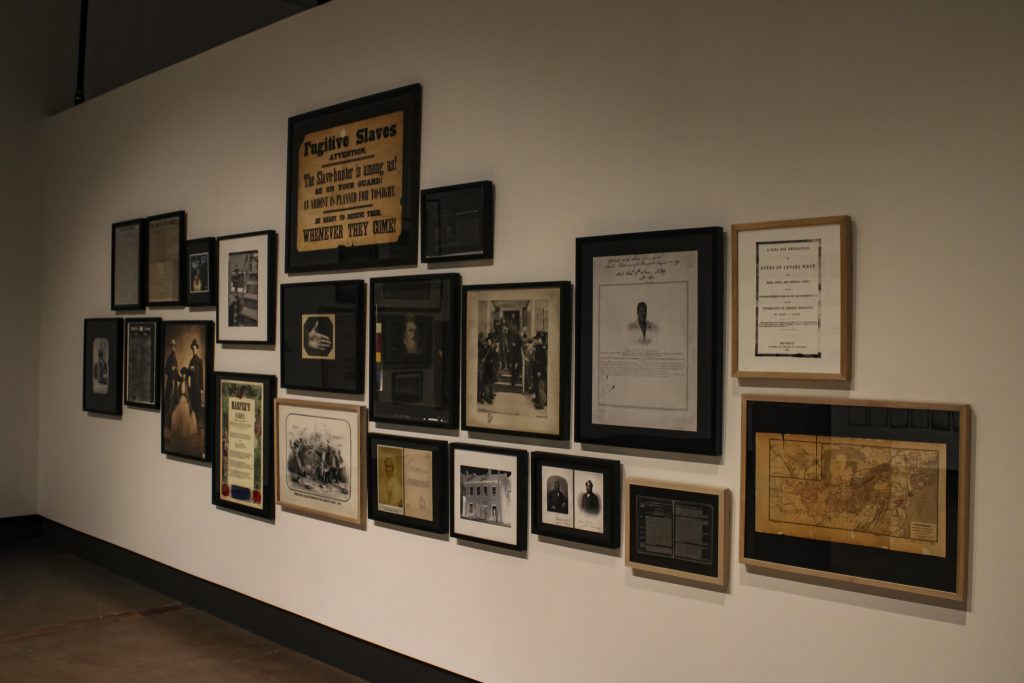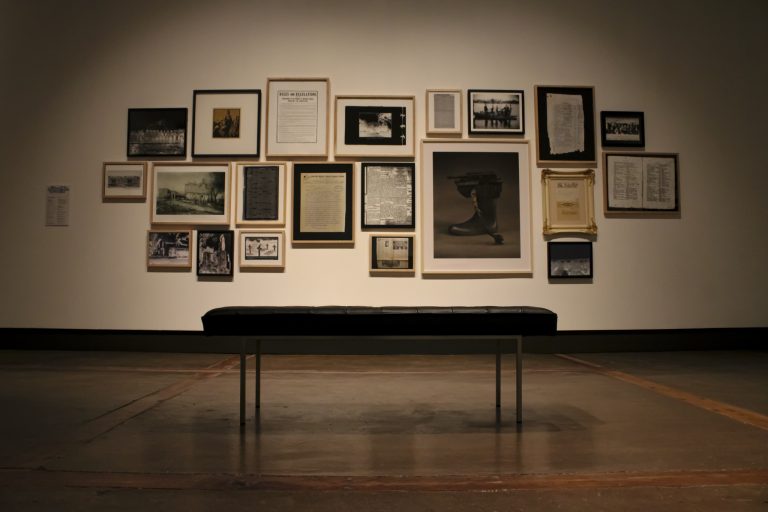Award-winning Montreal artist Deanna Bowen weaves ‘a compelling history of race and dispossession’ in the Waterloo Region and beyond in her new exhibition Black Drones in the Hive for the Kitchener-Waterloo Art Gallery (KWAG).
Crystal Mowry, the senior curator for the Kitchener-Waterloo Art Gallery, worked with Bowen on this ambitious new sprawling project — their largest solo exhibition mounted in over 20 years, spanning the entirety of their temporary exhibition spaces.
A distillation of the themes that Bowen has been exploring for 20 years or so, it brings together archival documents, commemorative objects, new sound and video, and selected works from KWAG’s permanent collection with The Group of Seven.
“Through Bowen’s intense scrutiny, Black Drones in the Hive reveals the centuries-long colonial project that entangles Indigenous, Black and European settler histories in this region. Bowen’s work reveals a myriad of ways in which white supremacy has shaped policy and public record,” Mowry said.
At a time when Canada has been confronting a deeply racist history, proof of our past is mounted on each wall of the gallery.

Bowen’s 1911 Anti Creek Negro Petition, is a reproduction of the 233 pages of handwritten signatures of racist Canadians. 15 per cent of Edmonton signed, demanding a ban on Black settlers immigrating from the United States to Western Canada.
“Deanna’s areas of interest are the petitions, the contracts, the ephemera that’s found in archives, that tell us a story of Canadian history that [is] quite different than the celebratory Group of Seven canon,” Mowry said.
This year is the centennial anniversary of the Group of Seven’s permanent exhibition at KWAG. The gallery officially opened in September 1956 with an exhibition of works by Canadian artist Tom Thomson. Bowen weaves references to the Group of Seven throughout Black Drones in the Hive that are quite different than the celebrated version of the art we were taught growing up.
Combing local archives, KWAG’s Permanent Collection, historical publications, and wartime propaganda, Bowen weaves together narrative threads of labour, migration and militarization — making it clear that the problems of our present-day are deeply rooted in our past.
“She’s not prescriptive about those narratives, or how you get to a sense of meaning but she places various elements together, juxtaposes them and you can intuit some of the connections between them,” Mowry said.
Mowry explained that with the way photography was at the time, many of the historical photographs of Black settlers would have been barely perceptible, look grey and have very little tonal range.
“By inverting the tonalities of the images she’s showing us something that is otherwise hard to see in that original image, and that’s what she’s intending to do.”
Mowry worked with Bowen to try to find noteworthy or curious things historically in local archives and came across the story of Levi Carroll, who was a local labourer — a Black man who was formerly enslaved, escaped around age 15 to live a free life here in Waterloo. A photograph from the 1800s depicts Carroll and his family in front of the old schoolhouse that now sits in Waterloo Park.
There are also photos and artifacts that uncover various deeper and darker secrets of systematic racism and cruelty in our region. Levi Carroll spent the last of his almost 100 years in a poorhouse called the Waterloo County House of Industry and Refuge.
“As a community, we tend to erase the less affluent narratives,” Mowry said.
Bowen’s work also traces her own familial history within a broader narrative of Black survival in Canada and the United States. This is a powerful exhibition with rare personal accounts from Black settlers’ lived experience.
The Refugee, Narrative of Fugitive Slaves in Canada, is one of the few collections of oral histories taken by people who were living at the time. Bowen showcases Sophia Pooley’s firsthand account of her life as an enslaved child in New York, and her free life in local Queen’s Bush near Waterloo County — one of the most important areas of settlement for fugitive Black Americans in the early 1900s.
“Deanna is living with the weight of this kind of work, but I think as a curator it’s really important for me to find ways to share that weight, it can’t be borne by the artist alone, especially when the subject matter is so corrosive.”

